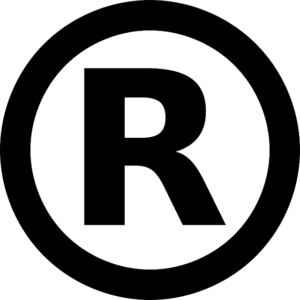
The Intellectual Property Office (“IPO”) defines a trade mark as a sign which can distinguish your goods and services from those of your competitors. It can be considered as your “brand” and is therefore often one of the most valuable assets which a business owns.
What is a trade mark?
 A trade mark can take different forms but is most commonly a logo, phrase or word that is associated with the brand of your business. Obvious examples include the various trade marks owned by The Coca-Cola Company. The brand’s name “Coca-Cola” is, of course, a registered trade mark as is its famous red logo encompassing the brand’s name. The brand has also registered various slogans as trade marks like “taste the feeling”. These trade marks are all associated with the Coca-Cola brand and having them registered means that The Coca-Cola Company is granted certain rights in relation to them.
A trade mark can take different forms but is most commonly a logo, phrase or word that is associated with the brand of your business. Obvious examples include the various trade marks owned by The Coca-Cola Company. The brand’s name “Coca-Cola” is, of course, a registered trade mark as is its famous red logo encompassing the brand’s name. The brand has also registered various slogans as trade marks like “taste the feeling”. These trade marks are all associated with the Coca-Cola brand and having them registered means that The Coca-Cola Company is granted certain rights in relation to them.
Trade marks are acceptable if they are distinctive for the goods and services you provide and can be recognised as signs that differentiate your goods or service as different from someone else’s.
When registering a trade mark, you will need to decide which class or classes you wish to register in. Trademarks are categorised into 45 classes in total, 34 for goods and 11 for services and the classes cover all the different types of goods and services possible. It is important to choose the right classes as the trade mark could be of little value if registered with the wrong class. If you’re not sure which class or classes you need, you can use the classification search tool TMclass which can help you search for and classify the goods and/or services for which you need to apply to register your trade mark.
How do I register a trade mark?
1) The first stage will be to make sure that what you’re trying to register as a trade mark can be registered as a trade mark.
2) You should do a quick search of the IPO register and the internet generally to check that there is no existing trade mark which is identical or even similar enough to cause confusion to your own trade mark. This is to avoid your trademark being rejected at a later stage.
3) Once you’ve submitted your trade mark application to the IPO, you will usually receive feedback within 20 days. If, during this stage, a problem is found then you will be granted 2 months to remedy it.
4) If your trade mark passes the initial examination, then your trade mark will be published in the Trade Marks Journal and there is then a two-month period to allow anyone to object to your trade mark. A common reason for raising an objection is that it infringes on their own trade mark or brand.
5) If there are no objections to your trade mark following its publication in the Trade Marks Journal, after two months the trade mark application will be granted and a registration certificate will be issued in the name of the registered owner.
The simplest way to register a trade mark is to use the online application process and we always recommend the “Right Start” process. The benefit of Right Start is that you only pay 50% of the fee upfront. If your application is then rejected or you decide not to proceed, you have only lost half the fee.
Do I need to register a trade mark?
The aim of many business owners is to build up the goodwill in their brand’s reputation in order to add value to their business.
If another business were to use your business’ name or logo, it can quickly cause reputational damage to your own brand. While there can be other legal ways to take action against transgressors, they are by no means straightforward and having a registered trade mark offers a simpler way to protect your brand.
BHW Solicitors can advise you on all stages of the process of registering a trade mark and can deal with filing the application on your behalf if you wish. If you want to discuss registering a trade mark, then please contact BHW’s commercial team on 0116 289 7000 or email info@bhwsolicitors.com.
Categorised in: Corporate and Commercial, Dispute Resolution, News
Tags: Commercial Law, Company Law, Copyright, Dispute Resolution, Trade Marks